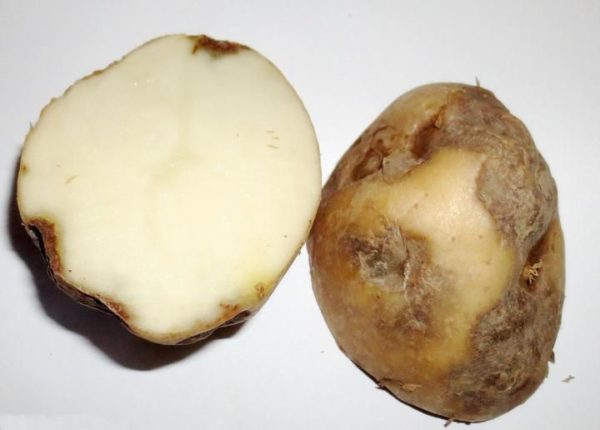
Many summer residents grow potatoes, however, not everyone knows that alternariosis can lead to crop losses. Despite the fact that the process of growing culture is simple, it is worthwhile to carefully approach the work. This will help to protect crops and increase productivity several times.
Content
Description of the causes and symptoms of potato alternariosis
The disease is quite common. In most cases, it affects tubers, leaves, stems. If alternariosis has appeared on the leaves, 3 weeks before flowering, dark brown spots can be seen on the plates. If the disease is not detected in time, the spots will grow together into one large, covering the entire surface. As a result, the sheets turn yellow and fall off.
Elongated spots may also form on the stems.
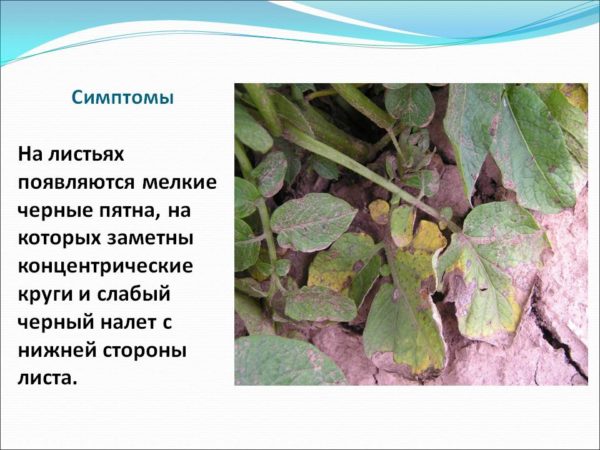
When tubers are infected, the fruits become covered with dark spots. If they are cut, inside you can find rotten areas.
The causes of diseases are the following factors:
- dry or hot weather;
- insufficient soil moisture;
- adverse weather conditions;
- Badlands
- insufficient application of mineral fertilizers;
- improper preparation of seed for planting.
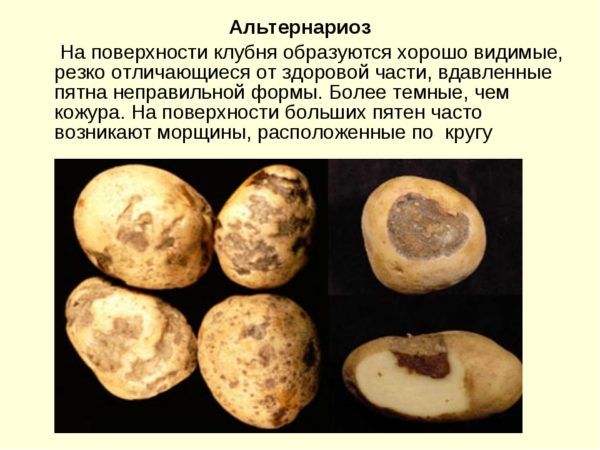
Alternaria biology
According to the photo, you can see potato alternariosis. Diseases can spread insects, wind, rain. Alternariosis develops during hot weather and in heavy rains. The optimal temperature for the development of the disease is 26 degrees.
Conidia penetrate the stomata of plants. As the culture grows, the fungus develops and releases acid, it also affects the main parts of the plant.
Signs of the disease
It is very difficult to identify signs of the disease, there are quite a few of them. The most common are the following:
- the appearance of brown spots on the leaves. They appear 3 days after infection. The diameter of the spots increases with time;
- after infection, the leaf plates become brittle, as a result of which they die off;
- gradually signs of infection appear on the stems;
- brown spots may also appear on the tubers. Over time, wrinkles are also visible on them.
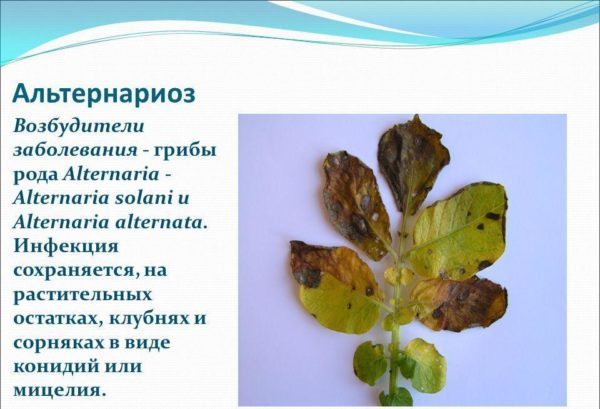
Source of infection
The main source of infection are conidia and mycelium. They are in the soil. Saved by plant debris and tubers. To protect crops, it is necessary to carefully remove weeds from the site and carry out preventive measures.
Methods of control and treatment of alternariosis
To get rid of potato alternariosis, you need to know in advance about measures to combat the disease. Specialists distinguish biological and chemical agents. Each group deserves attention.
- Biological agents.The following drugs can be attributed to this group: Bactofit, Integral, Agat-25, Planriz. Means are intended for processing seed before planting. The procedure allows you to reduce the clogging of the site during the growing season.
- Chemicals The list of drugs is huge, the most common are the following: Profit, Thanos, Acrobat, Pylon, Novozri, Tsikhom, Volman. The tool is used to spray crops during the growing season.
In addition, before laying the tubers for storage, they must be treated with Maxim.
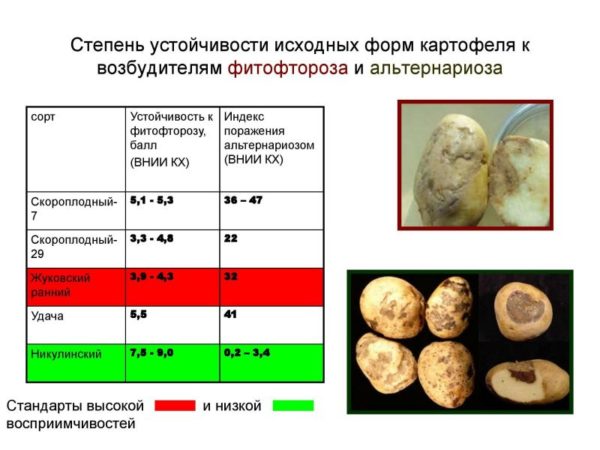
Prevention
Preventive measures will also help protect crops from alternariosis. The most effective are the following:
- Sick plants must be removed from the site. Deep plowing will help get rid of the source of infection.
- Proper crop rotation in crop rotation will protect crops. Potatoes can only be returned to their original place after 3 years. Experts do not recommend growing a crop near a tomato.
- Fertilizers must be used alternately. The soil should not be oversaturated with one of the components. In everything it is worth observing a measure.
- Preference should be given to varieties resistant to the disease.
- You can not leave tubers on the site, you need to be careful about harvesting. In addition, it is worthwhile to timely monitor the crops. At the first sign of infection, the bushes need to be destroyed.
- Processing seed before planting.
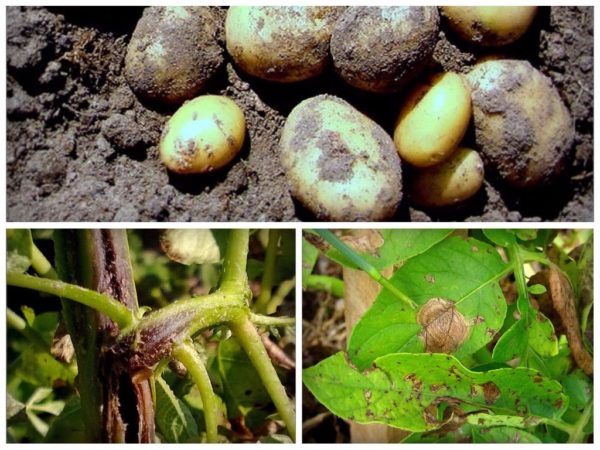
Reviews
Elena, 47 years old:
“I recently encountered potato alternariosis, studied the description of the disease from a photo, and started treatment. Dark spots appeared on the leaves of the potato, after which they only grew. I removed the affected plants from the site, burned the tops.
In addition, she processed crops with chemicals. This helped protect the plants and reap a good harvest. ”
Tatyana, 64 years old:
“I know firsthand alternaria.” The disease often affected crops. A friend recommended planting potato varieties that are resistant to the disease. Now nothing threatens the cultures, I am calm for my harvest.
In addition, the tubers are always large, neat, have a presentation ”.
Andrey, 57 years old:
“We grow potatoes for many years. I believe that it is best to carry out preventive measures in a timely manner. Simple measures will protect the crops and get a rich harvest. "
Potato alternariosis is a dangerous disease. Despite the fact that the technology of growing crops is simple, still the basic rules must be followed. As a result, it will be possible to preserve the crop, it will be possible to enjoy delicious fruits throughout the winter period.




 Description and description of varieties in Belarus with a photo
Description and description of varieties in Belarus with a photo Do I need to pick flowers from potatoes: why do they do it
Do I need to pick flowers from potatoes: why do they do it When to dig potatoes: timing and availability of new potatoes
When to dig potatoes: timing and availability of new potatoes How to grow a good potato crop: various methods and methods, planting and care
How to grow a good potato crop: various methods and methods, planting and care